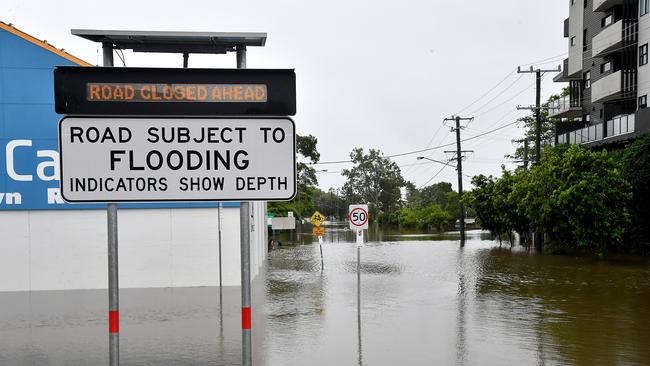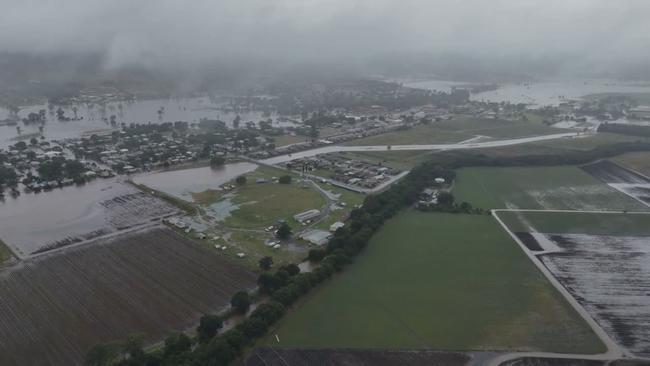Brisbane swamped by worst deluge in nearly 50 years
More than a dozen people have been rescued in swift water rescues over the past 24 hours after localised heavy rain from the remnants of ex-Tropical Cyclone Alfred.

Brisbane endured its biggest daily deluge of rain in half a century, causing localised flooding around the city’s creeks and river.
Ex-tropical cyclone Alfred, which crossed the coast on Saturday, delivered 275mm of rain across the CBD in the 24 hours to 9am on Monday, just short of the 314mm that fell ahead of the 1974 floods that swamped the city.
Homes and yards were inundated in suburbs including Windsor, Chelmer, Tingalpa and Ashgrove, but there was not the widespread flooding of 1974 or 2022, when more than 20,000 properties were affected.
A Bureau of Meteorology spokesman said that in 2022, up to a metre of rain fell across the city in a four-day period, causing the widespread flooding.
Emergency services reported only a few hundred properties experienced flooding before the waters receded on Monday morning.
An emergency alert was issued on Monday morning for people to prepare to move to higher ground in western suburbs of The Gap and Ashgrove after the Enoggera Dam began to spill. But the creek system, which had broken its banks on Sunday night, quickly receded.
Queensland Premier David Crisafulli said the State Emergency Service had the largest number of calls in its history, with more than 3600 calls in 24 hours.
Swift-water rescuers saved 35 people across southeast Queensland across 17 call-outs overnight on Sunday. Crews were active across the Sunshine Coast Scenic Rim, Ipswich and the Lockyer Valley, working in challenging conditions, said Queensland Fire Department Deputy Commissioner Kevin Walsh.

A drone was used to help rescuers traverse a 300m wide rush of water to save two people trapped with their vehicles at Palm Wood on the Sunshine Coast, while people were plucked from trees at Glenore Grove in the Lockyer Valley.
About 31,000 homes were reconnected to the power grid on Monday, with energy provider Energex confirming 175,000 properties across the southeast were still without power from a peak of 450,000 on Sunday.
More than 800 schools remain closed in southeast Queensland and northern NSW on Tuesday.
In Queensland, 319 state schools, 133 private schools and 43 Catholic schools will stay shut due to damage or blackouts. In northern NSW, 253 public schools, 42 private schools and 23 Catholic schools will be closed on Tuesday.
Mr Crisafulli said it was a priority to send children safely back to school. “It’s the difference between police officers, health professionals, someone working at the supermarket or petrol station, being able to go back (to work),’’ he said.

After the weekend, health experts issued a warning to residents about the deadly melioidosis bacteria, which is found in mud and water and comes to the surface after heavy rain and extreme weather events.
While the bacteria usually lives beneath the soil and is harmless to most healthy adults, it can easily spread in the air and water and enter a person via cuts, scratches or airborne water droplets.
So far, more than 100 cases of melioidosis have been recorded in Queensland, 80 of which have been recorded in north Queensland.
Nearly 20 people have lost their lives to the deadly disease.
Additional reporting: Alexandra Feiam





To join the conversation, please log in. Don't have an account? Register
Join the conversation, you are commenting as Logout